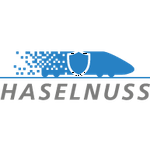Biography
I am a cyber security researcher for Fraunhofer SIT. Previously, I was a security engineer at Huawei Technologies, mobile software developer at Boostix/GAL, and a web and software developer for a number of other companies. I hold a master’s degree in Computer Science. Currently, I am co-chairing the Trusted Computing Group’s Network Equipment work group, working to secure vulnerable network equipment.
My research interests include cyber security, Trusted Computing, virtualization technologies, and distributed systems.
Interests
- Cyber Security
- Trusted Computing
- Virtualization Technologies
- Distributed Systems
Education
M.Sc. in Computer Science, 2014
Mittelhessen University of Applied Sciences
B.Sc. in Computer Science, 2009
Mittelhessen University of Applied Sciences
Pre-Diploma in Media Informatics, 2006
Mittelhessen University of Applied Sciences










